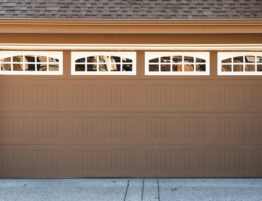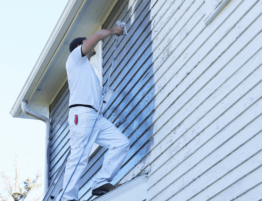
When tackling the task of exterior painting, the proper use of primers for exterior surfaces is crucial for achieving a long-lasting and professional finish. Whether you’re a DIY enthusiast or planning to hire exterior painters, understanding the nuances of primer application will ensure your exterior home painting project stands the test of time. Let’s dive into the best practices for using primers on exterior surfaces.
Introduction to Exterior Primers
Primers are not just a preliminary coat; they are the foundation of a durable paint job. But why are they so important for exterior painting? Primers help paint adhere better to surfaces, increase paint durability, and enhance the true color of the paint. Knowing when and how to use them can make a significant difference in your painting results.
Choosing the Right Primer
Types of Primers for Exterior Surfaces
- Oil-Based Primers: Ideal for wood and metal, as they seal porous surfaces well and prevent rust.
- Latex-Based Primers: Best for drywall and soft woods, these are easier to clean up and dry faster.
- Shellac Primers: Excellent for stain blocking and use on severely stained areas.
What to Consider When Choosing Primers for Exterior Surfaces
- Surface Material: Wood, metal, masonry, or composite?
- Weather Conditions: Will the primer withstand your local climate?
- Paint Type: Are you using latex or oil-based exterior paint?
Tip: Always choose a primer that complements your paint type and material for the best adhesion and protection.
Preparing Your Surface for Primer
Proper surface preparation can’t be overstated. Here’s how to ensure the surface is ready:
- Clean: Remove all dirt, grime, and peeling paint.
- Repair: Fill in cracks and sand smooth any rough areas.
- Dry: Ensure the surface is completely dry before applying primer.
How to Apply Primer Correctly
Tools You Will Need
- Brushes
- Rollers
- Painter’s tape
Application Tips
- Even Coverage: Apply a thin, even layer.
- Dry Time: Allow the primer to dry fully, according to the manufacturer’s instructions, before painting.
When to Use a Tinted Primer
Using a tinted primer can help you achieve richer color depth with fewer coats of paint. This is especially useful when painting darker colors over a lighter base.
The Role of Primers in Weather Resistance
Primers not only improve adhesion but also provide a barrier against weather elements like moisture and UV rays. In harsh climates, a good primer is essential for protecting your home.
Common Mistakes to Avoid When Using Primers
- Skipping primer on “pre-primed” materials.
- Not allowing proper dry time.
- Using the wrong type of primer for your surface.
The Benefits of Professional Exterior Painters
While DIY can be rewarding, hiring professional exterior painters ensures that the job is done efficiently and with expertise. Professionals understand how to select the right products and apply them correctly.
DIY Tips for Successful Exterior Home Painting
- Plan your painting around the weather.
- Invest in high-quality brushes and rollers.
- Always follow safety protocols, especially when using ladders.
How Minimalist Kitchens Can Help with Your Exterior Painting Needs
At Minimalist Kitchens, while we specialize in sleek kitchen designs, we also offer expert advice and services for exterior home painting. Our professionals are equipped to handle any painting challenge, ensuring a minimalist, clean look that enhances your home’s curb appeal.
Summary: Why Primer Is Essential for Exterior Surfaces
Primers are the unsung heroes of exterior painting. They ensure better adhesion, increased durability, and enhanced color performance. Whether you’re updating your home’s facade or protecting it against the elements, the right primer can make all the difference.
FAQs About Using Primers for Exterior Surfaces
- What happens if I skip the primer?
Skipping primer can lead to poor paint adhesion, peeling, and uneven coloration, especially in exterior applications.
- Can I use interior primer for exterior surfaces?
No, interior primers are formulated differently and do not have the necessary additives for weather resistance required for exterior applications.
- How long should I wait after priming before I can paint?
It varies by product, but generally, you should wait at least 24 hours. Check the primer’s instructions for the best results.
- Do I need to prime if I am repainting the same color?
Yes, priming is still recommended to ensure the new paint adheres properly and lasts longer.
- Can primer be used to correct color variations in the exterior surface?
Yes, primer can help create a uniform surface that minimizes color variations under the paint layer.
By using this guide, your exterior painting project will not only look great but endure through seasons, showcasing your home’s beauty and protecting your investment. Whether you’re a seasoned DIYer or considering professional exterior painters, remember that a good start with the right primer sets the stage for a fantastic finish.
Ready to transform your home’s exterior with a professional paint job? Call Wall Works at 951-695-5588 today to schedule your free estimate. Our team of expert painters is dedicated to delivering top-notch results that not only look fantastic but last for years. Don’t wait, reach out now to make your home stand out!





